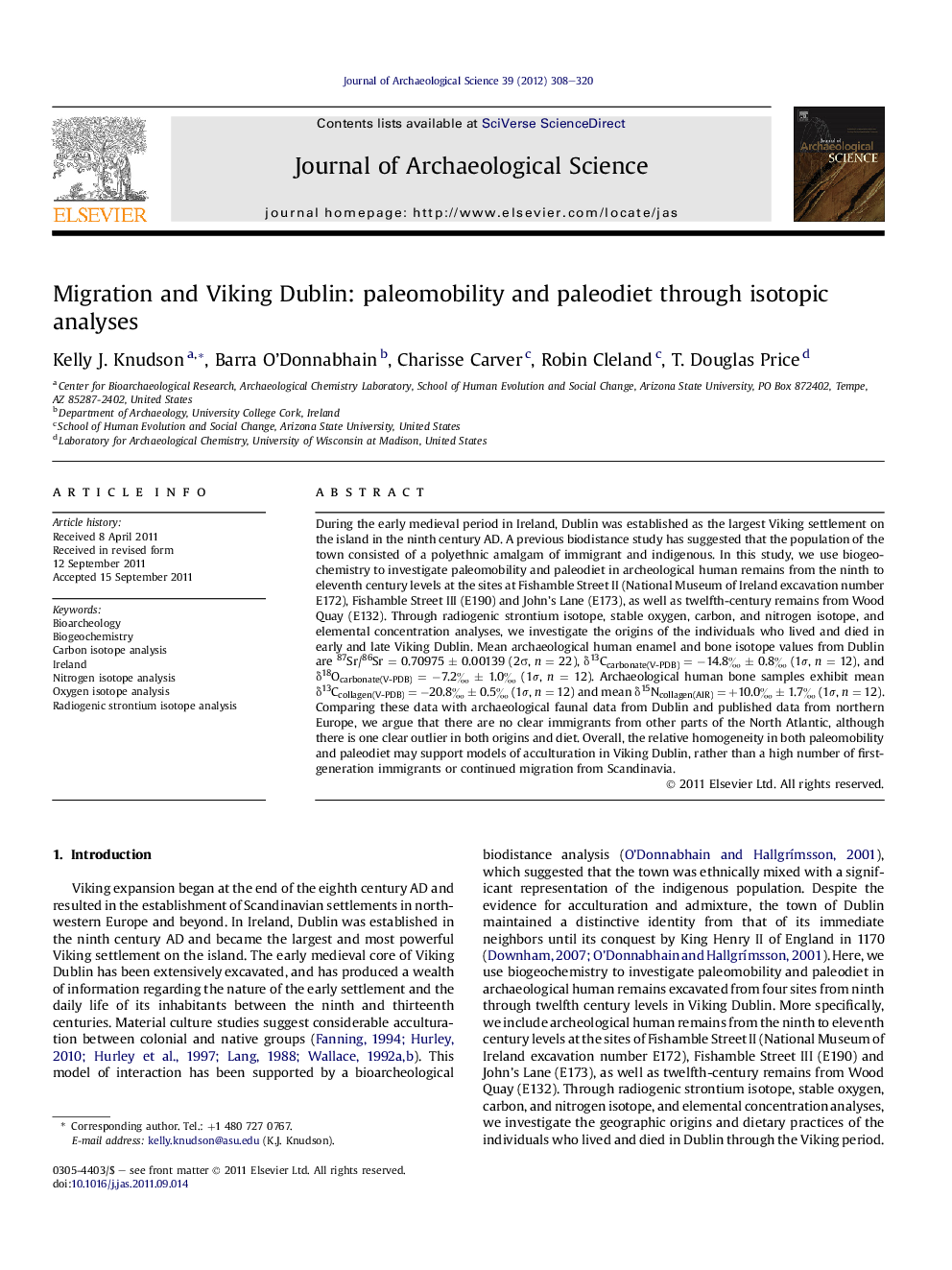| کد مقاله | کد نشریه | سال انتشار | مقاله انگلیسی | نسخه تمام متن |
|---|---|---|---|---|
| 1035885 | 943868 | 2012 | 13 صفحه PDF | دانلود رایگان |

During the early medieval period in Ireland, Dublin was established as the largest Viking settlement on the island in the ninth century AD. A previous biodistance study has suggested that the population of the town consisted of a polyethnic amalgam of immigrant and indigenous. In this study, we use biogeochemistry to investigate paleomobility and paleodiet in archeological human remains from the ninth to eleventh century levels at the sites at Fishamble Street II (National Museum of Ireland excavation number E172), Fishamble Street III (E190) and John’s Lane (E173), as well as twelfth-century remains from Wood Quay (E132). Through radiogenic strontium isotope, stable oxygen, carbon, and nitrogen isotope, and elemental concentration analyses, we investigate the origins of the individuals who lived and died in early and late Viking Dublin. Mean archaeological human enamel and bone isotope values from Dublin are 87Sr/86Sr = 0.70975 ± 0.00139 (2σ, n = 22), δ13Ccarbonate(V-PDB) = −14.8‰ ± 0.8‰ (1σ, n = 12), and δ18Ocarbonate(V-PDB) = −7.2‰ ± 1.0‰ (1σ, n = 12). Archaeological human bone samples exhibit mean δ13Ccollagen(V-PDB) = −20.8‰ ± 0.5‰ (1σ, n = 12) and mean δ15Ncollagen(AIR) = +10.0‰ ± 1.7‰ (1σ, n = 12). Comparing these data with archaeological faunal data from Dublin and published data from northern Europe, we argue that there are no clear immigrants from other parts of the North Atlantic, although there is one clear outlier in both origins and diet. Overall, the relative homogeneity in both paleomobility and paleodiet may support models of acculturation in Viking Dublin, rather than a high number of first-generation immigrants or continued migration from Scandinavia.
► We use biogeochemistry to investigate paleodiet and paleomobility in Viking Dublin.
► There are no Scandinavian immigrants in ninth through twelfth-century contexts.
► These data support acculturation rather than many first-generation immigrants.
Journal: Journal of Archaeological Science - Volume 39, Issue 2, February 2012, Pages 308–320